- LAGRANGIAN
- Posts
- Issue 56 | Breaking Space News: June 22 - 28, 2025
Issue 56 | Breaking Space News: June 22 - 28, 2025
World’s Firsts: Images From World's Largest Digital Camera & Photographed Exoplanets — This Week in Space: Bolivian Forests, Mexico-SpaceX Fallout, Shoes Designed in Orbit, NSF Eviction, Uninsured Satellites, Space Force Budget, ULA's Government Compliant Chatbot -RocketGPT, Maxar’s Sentry, Lunar Dust, Radiation-Proof Lichens & More
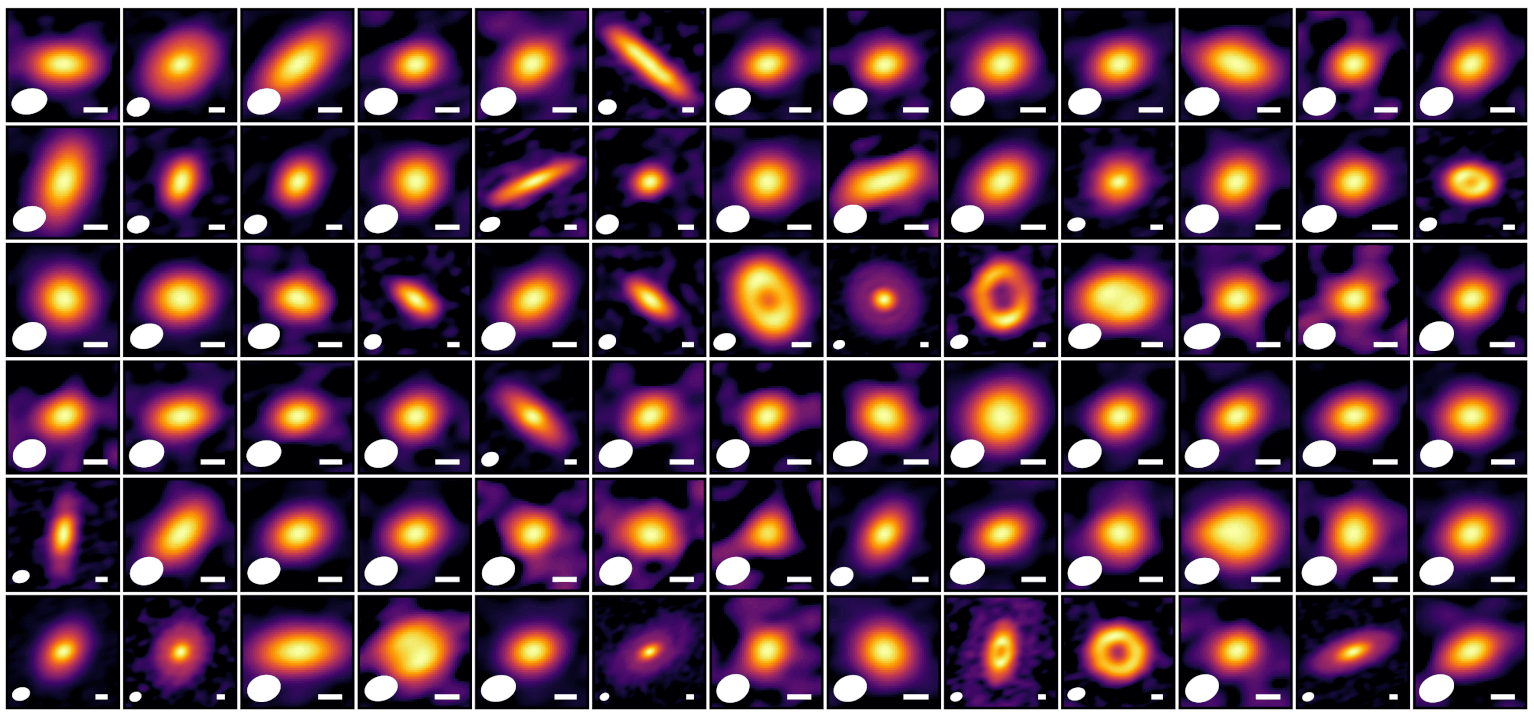
Explorer, welcome back!🚀
The line between Commercial Space and Defense gets increasingly blurry. Stunning new images from telescopes and satellites. As always, talk to us. We talk back on Discord, Instagram, LinkedIN, and TikTok.
Gmail users might experience a clipped publication. Click below for the full newsletter experience.
Enjoy reading!
China Launches ChinaSat-9C, Proposes Apophis Cubesat Swarm, & Completes Shenzhou-20 Spacewalk
Florida Startup to Launch AI-Driven Shoe Design Experiment in Low Earth Orbit
Two-Week Axiom-4 Mission Begins with Launch, Docking on ISS, & Science Agenda
NASA’s New SLS Booster Design Experiences Nozzle Failure During Static Fire Test
Japan Launches Climate & Water Cycle Monitoring Satellite on Final Flight of H-2A Rocket
ULA Pilots Government-Compliant AI Chatbot Developed with OpenAI, PwC
Atlas V Launches Second Batch of Project Kuiper Satellites for Amazon
Ukraine & Allies Seek €100M for Dual-Use Surveillance Satellite System to Reduce US Reliance
Lynk Global Pursues Independent Path as Slam Corp Merger Stalls Amid Lawsuit
Exploration Company’s Mission Possible Ends with Loss of Celestis Payloads
Laser Rangefinder Malfunction Led to ispace’s Resilience Lunar Lander Crash
Isar Aerospace Expands Launch Capabilities as Lux Aeterna Unveils Reusable Satellite Platform
Maxar Launches Persistent Global Monitoring Platform Powered by Satellite Data and AI

IMAGES
First Images from the Vera C Rubin Observatory

A section of Rubin's first full image of the Virgo cluster shows a stunning variety of objects — from bright stars ranging from blue to red, to nearby blue spiral galaxies, to distant red galaxy groups — demonstrating the broad range of science made possible by Rubin data. (Credit: RubinObs/NOIRLab/SLAC/NSF/DOE/AURA)
The Vera C. Rubin Observatory has released its first images, captured by the world’s largest digital camera—a 3,200-megapixel instrument designed to survey the southern sky. Located in Chile, the observatory will collect 20 terabytes of data nightly as part of the 10-year Legacy Survey of Space and Time. To manage this volume, astronomers rely on a distributed network of data centers and a “data butler” system to filter and process alerts. The observatory’s early images, including detailed views of the Trifid and Lagoon Nebulae, demonstrate its potential to transform time-domain astronomy and deepen understanding of dark matter and dark energy.
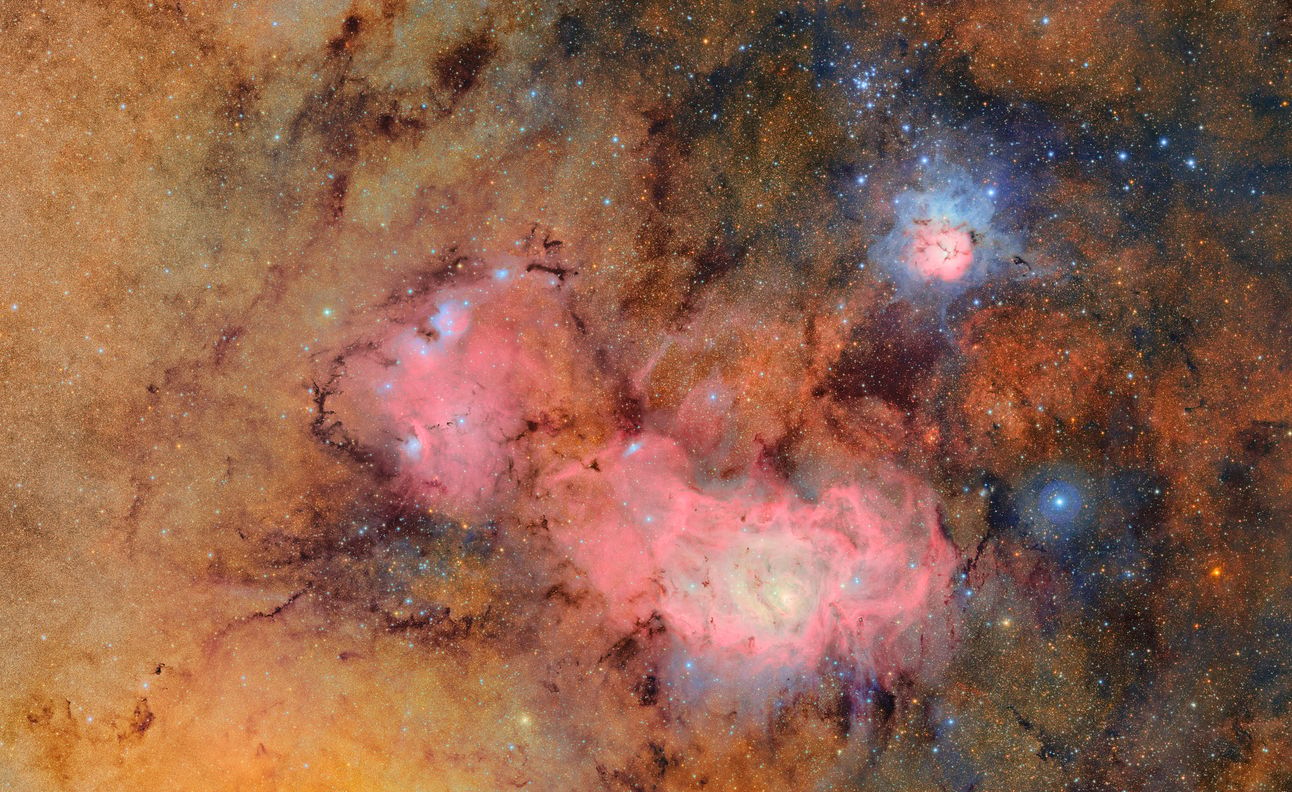
Trifid and Lagoon: This image is the result of stacking 678 individual exposures captured by the NSF–DOE Vera C. Rubin Observatory over a span of just over seven hours. By merging these frames, astronomers were able to uncover faint features—such as the gas and dust clouds of the Trifid Nebula (top) and the Lagoon Nebula—located thousands of light-years from Earth, that would otherwise remain hidden. (Credit: NSF–DOE Vera C. Rubin Observatory)
Saturn-Sized Exoplanet, Orbiting TWA 7 : ESO’s Very Large Telescope & James Webb Space Telescope
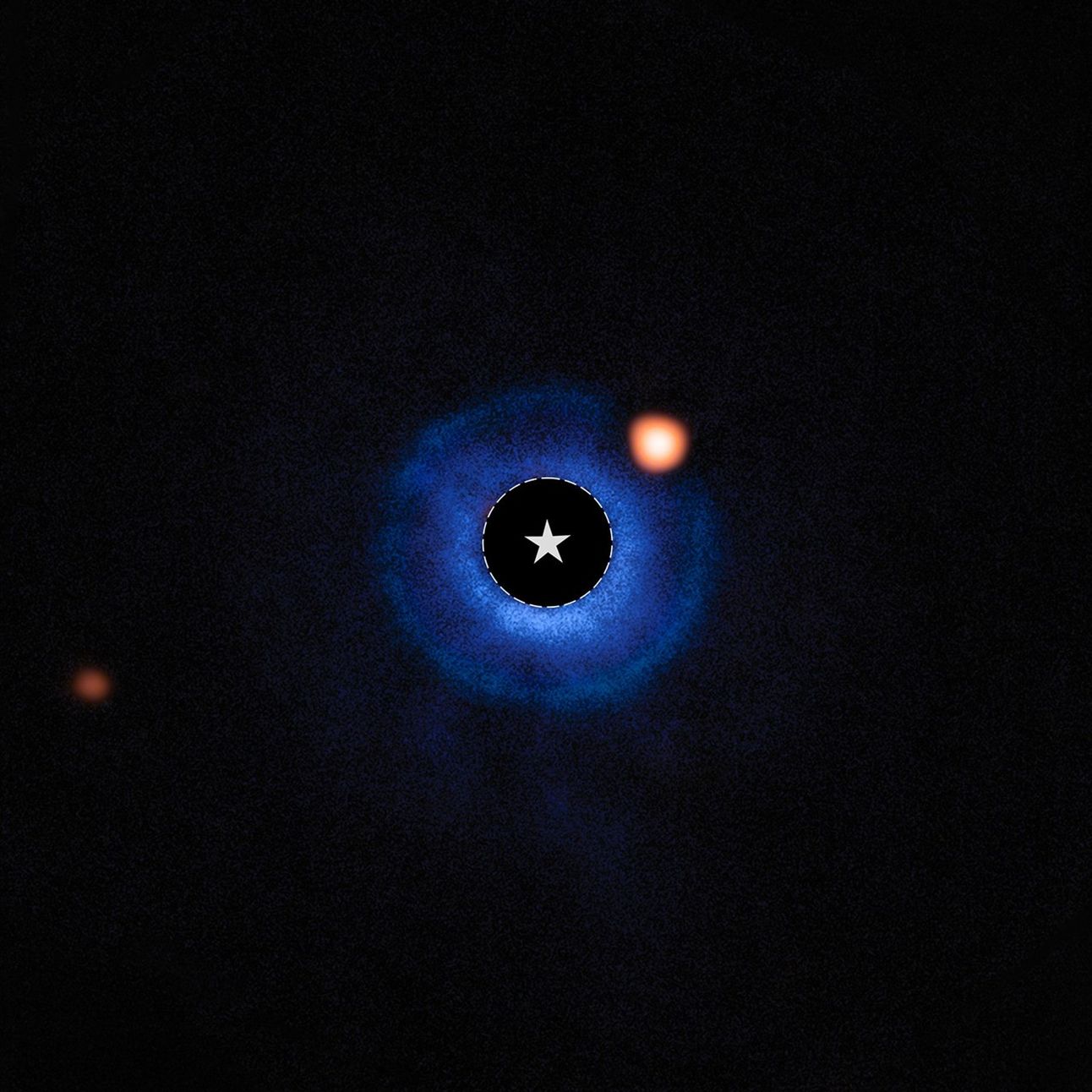
Astronomers using NASA’s James Webb Space Telescope have captured compelling evidence of a planet with a mass similar to Saturn orbiting the young nearby star TWA 7. In this image combining ground-based data from ESO’s Very Large Telescope (VLT) and data from Webb’s MIRI (Mid-Infrared Instrument), light from the star TWA 7 has been subtracted. The location of the star is marked with a circle and a star symbol at the center of the image. The blue color represents data from the VLT’s SPHERE instrument, which showcases the location of the disk surrounding the host star. MIRI data is shown in orange. The bright orange spot to the upper right of the star is the source identified as TWA 7 b, within the debris disk. The more distant orange spot visible in the left of the image is an unrelated background star. (Credit: NASA, ESA, CSA, Anne-Marie Lagrange (CNRS, UGA), Mahdi Zamani (ESA/Webb))
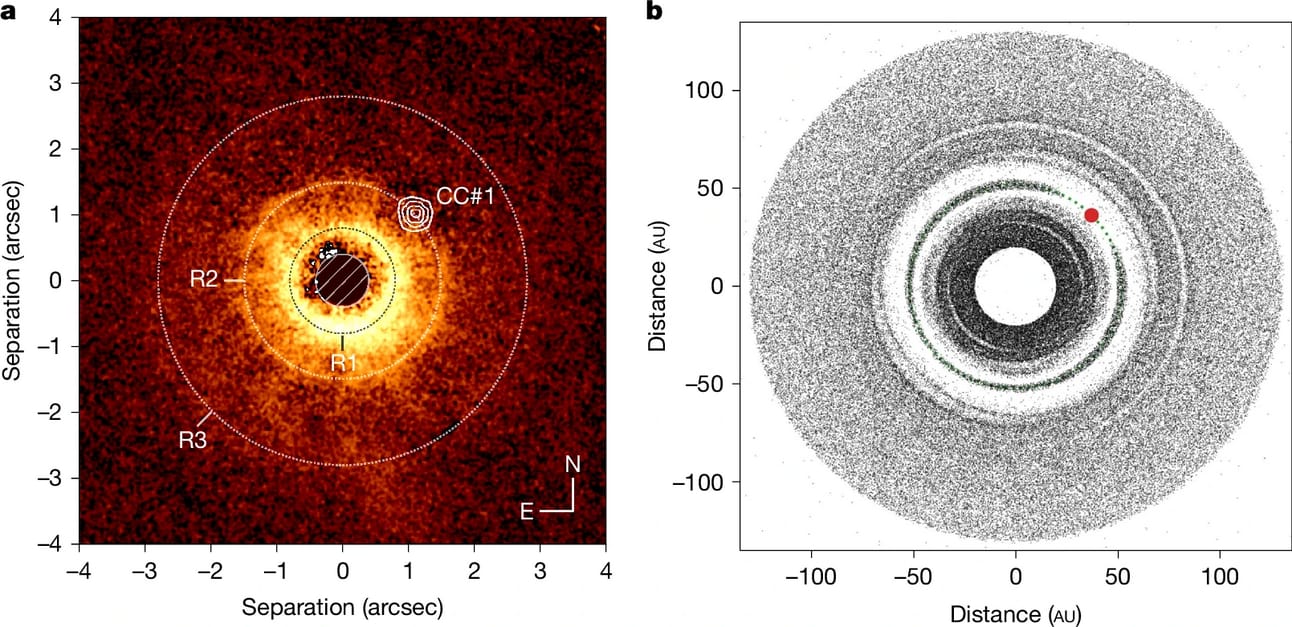
a). Polarimetric image (log scale) of a protoplanetary disk, combining data from three observation dates: April 26, 2016 (ref. 17), March 20, 2017 (ref. 18), and February 8, 2022 (processed as in ref. 18). The image was taken with SPHERE's IRDIS instrument and overlaid with contours from a resampled MIRI image. Peak ring densities are marked, and a central hatched circle masks residual light from the star. Supplementary Table 2 provides the logarithmic values used. b). Simulation of a planetesimal disk after 6 million years, showing the effect of a 0.34-Jupiter-mass planet on a circular orbit at 52 au. The planet’s orbit is shown in green, with its current position marked in red. (Credit: A.-M. Lagrange and al. - Evidence for a sub-jovian planet in the young TWA7 disk, 2025)
78 Protoplanetary Disks in High-Res, Ophiuchus Star-Forming Region
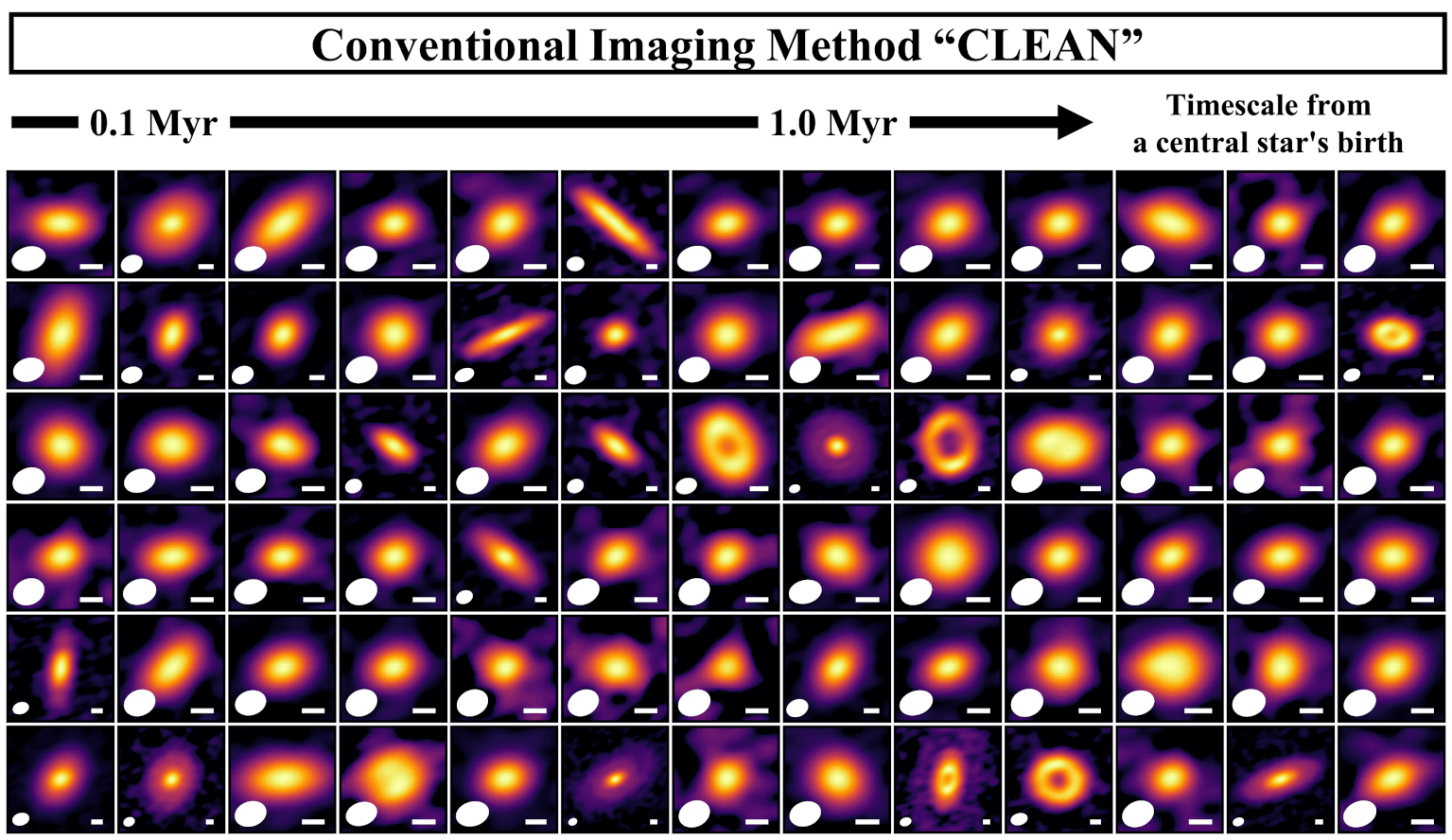
Images comparing protoplanetary disks in the Ophiuchus star-forming region using super-resolution imaging with sparse modeling and a standard imaging method. The white ellipse in the lower left of each image shows the resolution—smaller ellipses mean sharper detail. The white line in the lower right shows a distance of 30 astronomical units. The central stars are shown at different stages of evolution, moving from left to right and top to bottom in each row. (Credit: ALMA (ESO/NAOJ/NRAO), A. Shoshi et al.)
A new study using archival ALMA (Atacama Large Millimeter/submillimeter Array) data has revealed that signs of planet formation may emerge far earlier than previously thought. By applying a super-resolution imaging technique called sparse modeling, researchers analyzed 78 protoplanetary disks in the Ophiuchus star-forming region and identified ring and spiral substructures in 27 of them—15 of which had not been detected before. These features, often linked to nascent planets, were found in disks just a few hundred thousand years old. The findings suggest that planet formation may begin during the earliest stages of star birth, offering new insight into the coevolution of stars and planetary systems. The study, led by researchers at Kyushu University and the Academia Sinica Institute of Astronomy and Astrophysics, was published in The Publications of the Astronomical Society of Japan
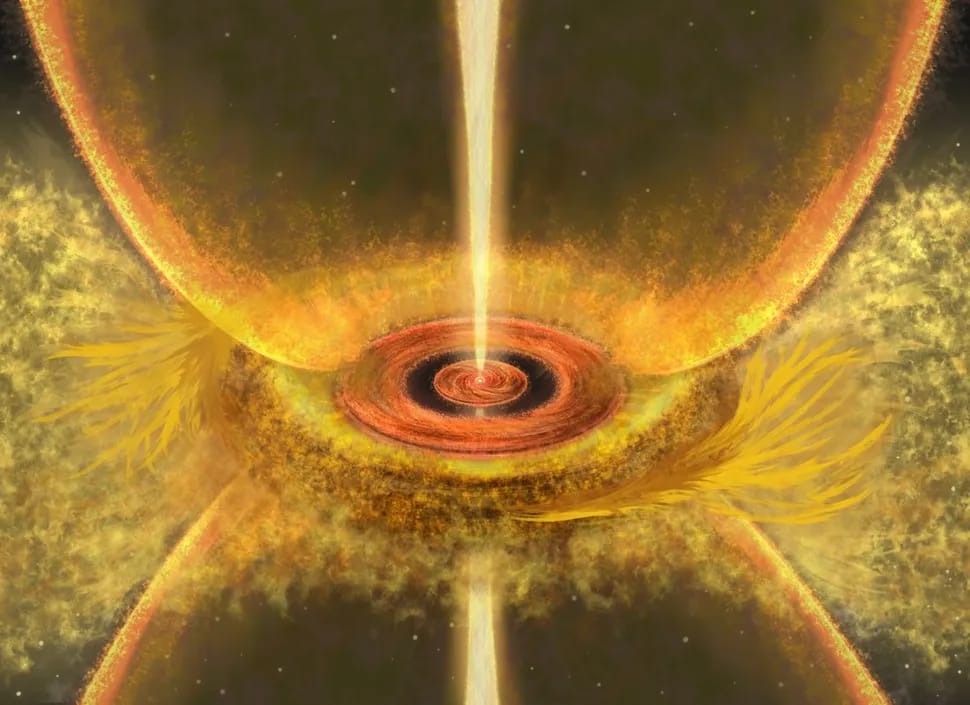
Artist’s illustration of the distinctive substructure in a protoplanetary disk formed a few hundred thousand years after the birth of the central star (Credit: Y. Nakamura, A. Shoshi et al.)
Bolivian Forest & Landscape : ESA's Biomass Satellite
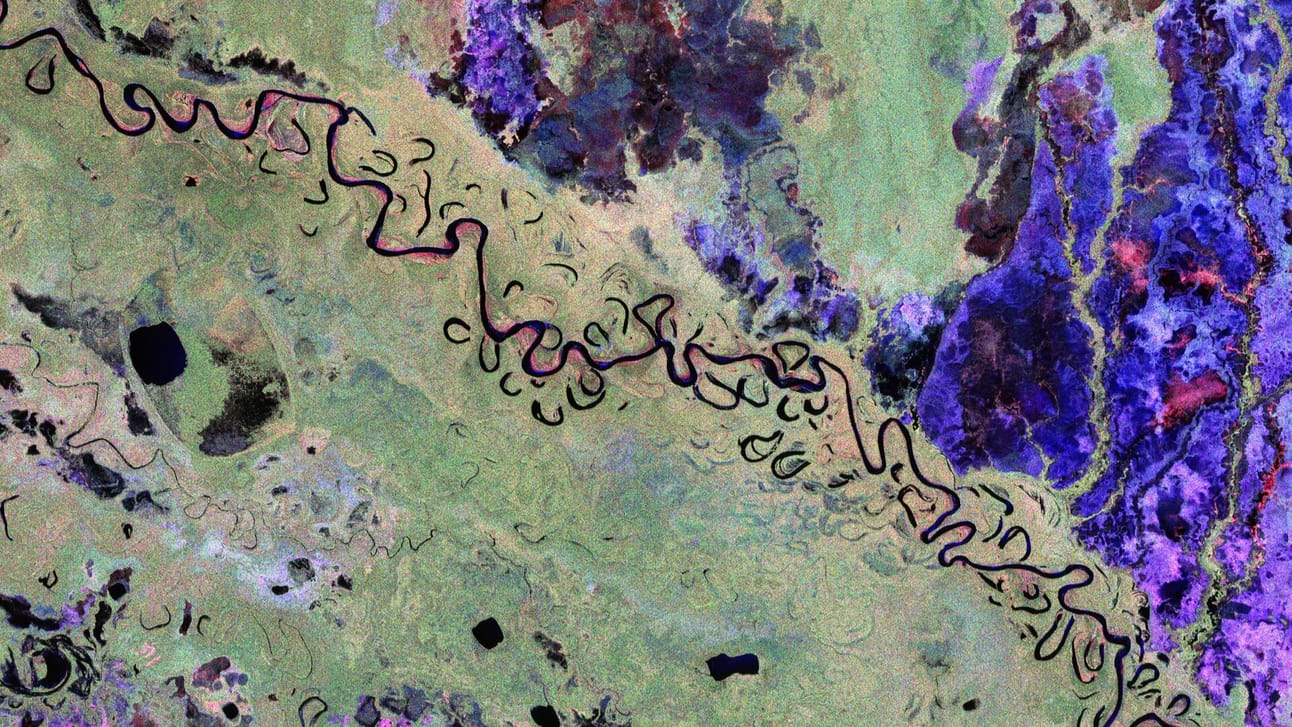
This image from ESA’s Biomass satellite shows a section of Bolivia, a country heavily affected by deforestation, largely due to agricultural expansion. Captured using radar polarisation channels, the image uses color to highlight different landscapes—green for rainforest, red for floodplains and wetlands, blue–purple for grasslands, and black for rivers and lakes. It covers an area roughly 90 km long and 60 km wide, with north positioned to the right. The Biomass mission will help track changes in forest carbon over time. (Credit: ESA)
Exoplanet GJ 504 b, "Second Jupiter" : HiCIAO, Subaru Telescope
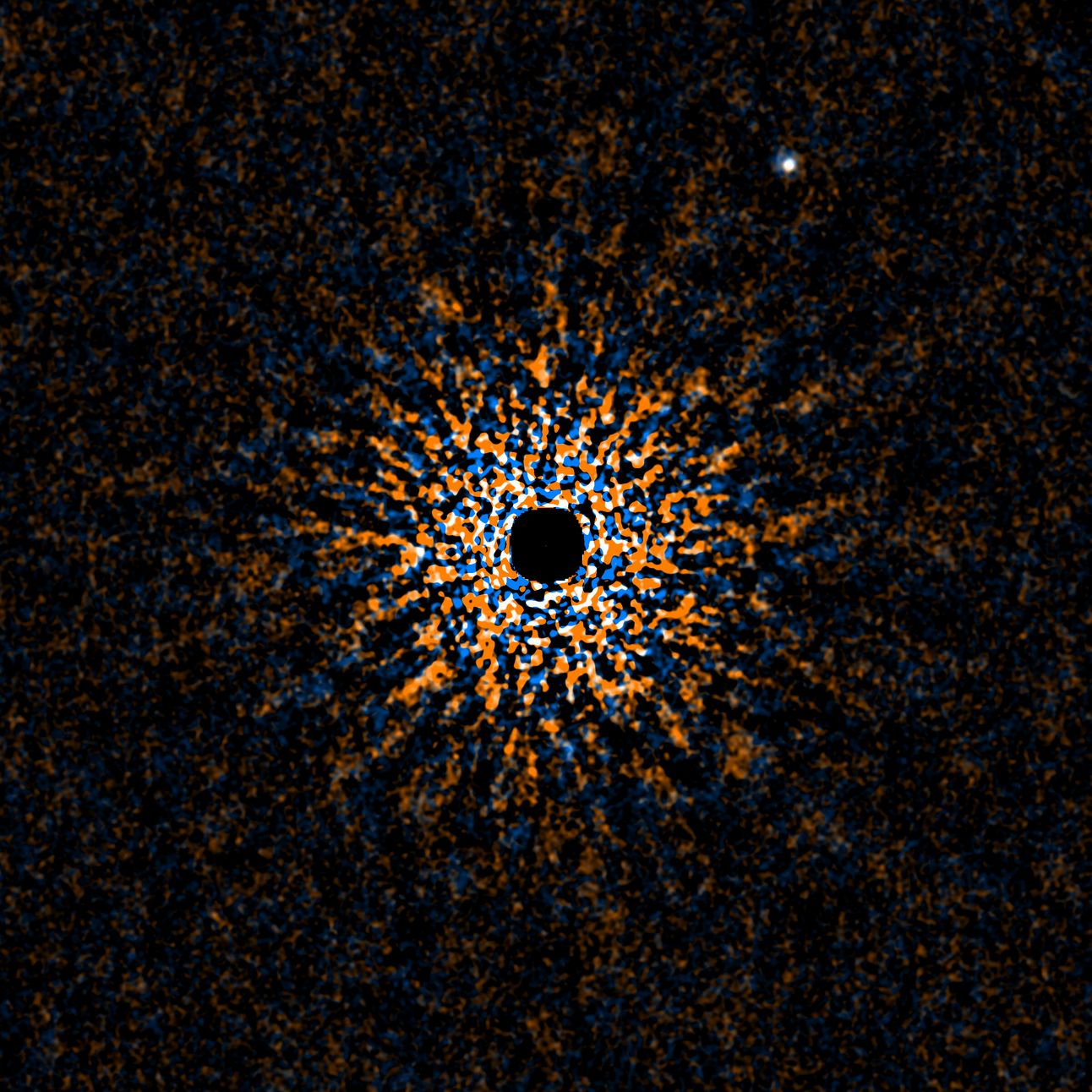
GJ 504 b is a faint, cold exoplanet orbiting the sun-like star GJ 504 in the constellation Virgo, roughly 60 light-years from Earth. Estimated to be three to six times the mass of Jupiter, it is the least massive planet ever directly imaged. Discovered by the SEEDS project using Subaru Telescope’s HiCIAO coronagraph and AO188 adaptive optics system, GJ 504 b appears in the image’s upper right, about 44 astronomical units from its host star—a distance comparable to that between the Sun and Pluto. Its low temperature (~500 K) and relatively clear atmosphere offer valuable insights into exoplanetary characteristics. (Credit:

SCIENCE
China Launches ChinaSat-9C, Proposes Apophis Cubesat Swarm, & Completes Shenzhou-20 Spacewalk
22 June, 2025
China’s space program continues to demonstrate a multi-pronged strategy spanning geostationary communications, deep space exploration, and human spaceflight. On June 20, China launched the ChinaSat-9C satellite aboard a Long March 3B rocket from Xichang, replacing the 17-year old, Thales Alenia Space-built predecessor, ChinaSat-9. Built by CASC’s China Academy of Space Technology (CAST), on the DFH-4E platform, the satellite will enhance national broadcasting capabilities. The launch also marks a broader push for technological self-reliance in geostationary orbit. It is part of a long-running modernization effort that has seen China replace imported satellites with domestically produced models.
26 June, 2025
Meanwhile, Chinese scientists are proposing a cubesat swarm mission to fly by asteroid Apophis during its close Earth approach in 2029. The Apophis Recon Swarm (ARS) would deploy multiple cubesats—either collectively or as rideshares—to conduct flybys and gather data on the asteroid’s mass, surface, and internal structure. Though still unfunded, the proposal shows the growing interest in planetary defense and China’s intent to participate in global asteroid science efforts.
The 1,100-foot-wide (340 meters) Apophis, also known as asteroid 99942, was once considered a threat to Earth, is now set to make a very close, but safe, flyby.
27 June, 2025
In low Earth orbit, the Shenzhou-20 crew aboard the Tiangong space station completed their second spacewalk on June 26. Astronauts Chen Dong and Chen Zhongrui installed debris shielding and upgraded robotic arm interfaces to streamline future extravehicular activities. The mission, launched in April, also includes a range of microgravity experiments and international outreach efforts.
These developments evidence China’s expanding capabilities across orbital regimes. From replacing legacy infrastructure in GEO to advancing planetary science and sustaining human presence in LEO, the country is pursuing a layered space strategy that blends domestic priorities with emerging global scientific and security interests.
Florida Startup to Launch AI-Driven Shoe Design Experiment in Low Earth Orbit

Animation showing Syntilay’s AI-designed footwear. (Credit: Syntilay)
25 June, 2025
Florida-based footwear startup Syntilay plans to design the first shoe in space by mid-to-late 2026, using artificial intelligence aboard a satellite in low Earth orbit. The mission, led by space-computing startup, OrbitsEdge and Copernic Space (a Web3 marketplace focused on the commercialization and financing of the space economy), will launch on a SpaceX Falcon 9. The mission aims to demonstrate the feasibility of off-Earth design and computing. Syntilay’s AI agent will generate a 3D shoe design in microgravity, which will be transmitted to Earth for 3D printing and tokenized authentication via blockchain.
The initiative is part of a broader commercial push to explore space-based applications for AI and crypto infrastructure, with proponents arguing that relocating energy-intensive processes off-planet could reduce terrestrial environmental impacts. Backed by Reebok co-founder Joe Foster, Syntilay sees the project as a way to carve out a niche in a competitive market while contributing to the emerging off-Earth economy. The company expects to release the space-designed shoes by September 2026, priced at approximately $200.
While manufacturing will take place on Earth, the project’s designers suggest that the microgravity environment may yield novel design geometries not typically achievable under terrestrial conditions. The mission also functions as a technical demonstration of edge computing in orbit, potentially informing how artificial intelligence could be deployed in future off-planet infrastructure. The initiative may carry symbolic significance, positioning space-based design as a test case for broader efforts to decentralize energy-intensive digital processes.
Two-Week Axiom-4 Mission Begins with Launch, Docking on ISS, & Science Agenda
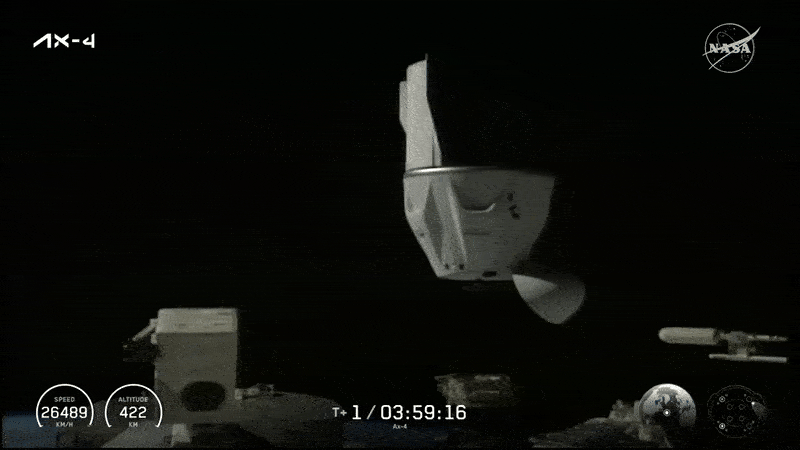
Axiom Mission 4 aboard the SpaceX Dragon docked to the International Space Station on June 26, 2025. (Credit: SpaceX)
25 June, 2025
Axiom Space’s fourth private astronaut mission, Ax-4, finally launched on June 25 2025, aboard a SpaceX Falcon 9 from Kennedy Space Center. The crew—led by veteran astronaut Peggy Whitson and including government-sponsored astronauts from India, Poland, and Hungary—docked with the International Space Station (ISS) after a 28-hour orbital chase. Peggy Whitson is a former NASA astronaut and Axiom’s director of human spaceflight. Her crewmates include pilot Shubhanshu Shukla of India’s Indian Space Research Organisation (ISRO), mission specialist Sławosz Uznański of Poland and the European Space Agency (ESA), and mission specialist Tibor Kapu of Hungary.
The mission faced multiple delays due to weather, a Falcon 9 oxygen leak, and concerns over a long-standing air leak in the ISS’s Zvezda module. Once aboard, the Ax-4 crew joined Expedition 73 and began a two-week stay focused on over 60 science and outreach activities, the most of any Axiom mission to date. The research spans human health, materials science, and technology demonstrations, with contributions from 31 countries. Ax-4 also serves as a proving ground for Axiom’s future commercial space station, offering operational experience and international collaboration ahead of the ISS’s planned retirement later this decade.
NASA’s New SLS Booster Design Experiences Nozzle Failure During Static Fire Test
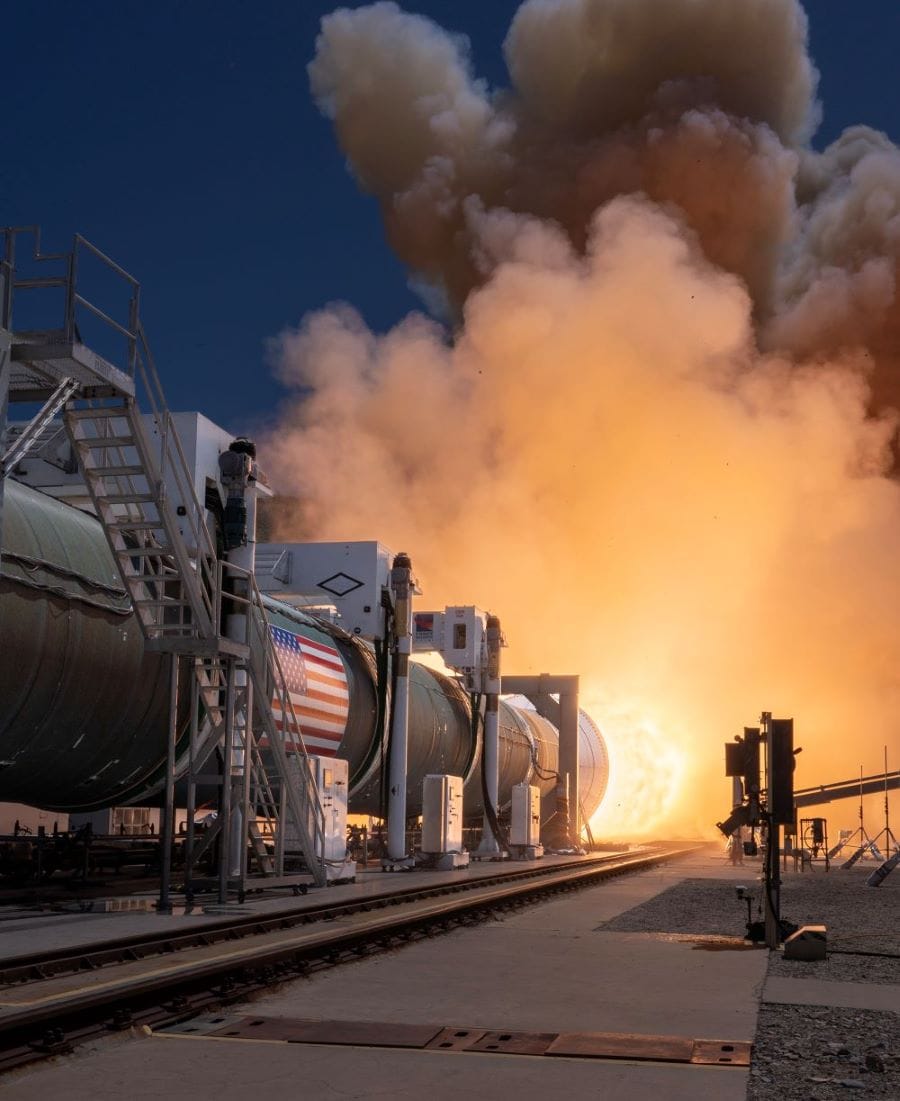
During the test: the 156-foot-long BOLE is the world’s largest and most powerful segmented solid rocket motor built for human spaceflight and produced over 4 million pounds of thrust. (Credit: Northrop Grumman)
26 June, 2025
NASA and Northrop Grumman encountered a significant setback during a June 26 static fire test of the new Booster Obsolescence and Life Extension (BOLE) solid rocket motor, intended for future Artemis missions. Conducted in Utah, the test marked the first full-scale demonstration of the upgraded booster,—enhanced five-segment solid rocket motor— which features carbon-fiber casings, electronic thrust vector control, and enhanced propellant for improved performance. While the motor operated nominally for most of the two-minute burn, a dramatic nozzle failure occurred near the end, ejecting debris and flames.
The anomaly raises questions about the BOLE design’s readiness, especially as it is slated for use no earlier than Artemis 9. The test was part of a broader effort to replace aging shuttle-era components in the Space Launch System (SLS), which itself faces an uncertain future amid budget pressures and proposed program cancellations. Engineers are now analyzing data from over 700 sensors to determine the cause and implications of the failure.
Japan Launches Climate & Water Cycle Monitoring Satellite on Final Flight of H-2A Rocket
28 June, 2025
Japan marked the end of an era on June 28 with the 50th and final launch of its H-2A rocket, delivering the GOSAT-GW satellite into orbit from Tanegashima Space Center. Operated by JAXA and built by Mitsubishi Heavy Industries, the H-2A retires after a 24-year career with a 98% success rate. Its successor, the H3 rocket, is expected to offer similar capabilities at lower cost.
The GOSAT-GW satellite—short for Greenhouse Gases and Water Cycle Observation Satellite—carries two instruments: AMSR-3, which monitors Earth’s water cycle, and TANSO-3, which tracks greenhouse gases including carbon dioxide and methane. The mission builds on Japan’s earlier GOSAT and GCOM-W programs, aiming to provide high-resolution climate data to international partners.

GOVERNANCE
NASA Conference Withdrawals & NSF Eviction Reflect Strains on U.S. Science
The U.S. astronomy community is facing mounting uncertainty as NASA and the National Science Foundation (NSF) contend with abrupt operational and budgetary disruptions.
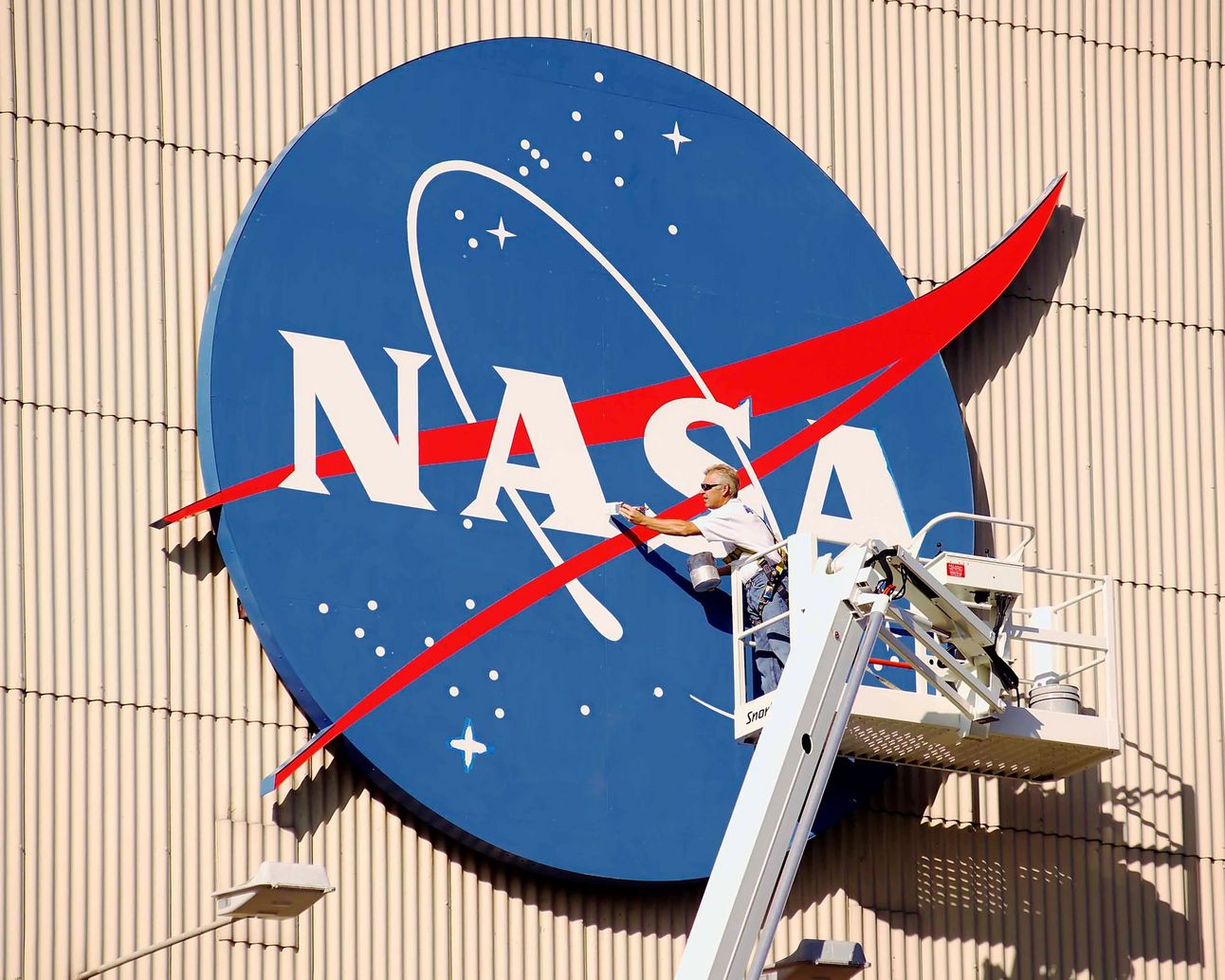
A painter touches up the iconic NASA emblem on the Flight Research Building at NASA’s Glenn Research Center. Known as “the meatball,” the distinctive blue logo has made the hangar one of the center’s most recognizable landmarks. (Credit: NASA)
26 June, 2025
NASA has recently withdrawn from several major scientific conferences—including the American Astronomical Society’s summer meeting and the Lunar and Planetary Science Conference—citing a need to reprioritize spending amid shifting exploration goals. The agency’s absence has been widely felt. Scientists described the agency’s absence as “devastating,” noting that it disrupted collaboration, reduced visibility for early-career researchers, and signaled broader instability. The White House’s FY 2026 budget proposal includes a nearly 50% cut to NASA’s science funding, potentially eliminating multiple missions and reducing the agency’s workforce by a third.

The National Science Foundation headquarters in Alexandria, Virginia, US. (Credit: U.S. National Science Foundation)
Simultaneously, more than 1,800 NSF employees were abruptly ordered to vacate their Alexandria, Virginia headquarters to make way for the 2,700 Department of Housing and Urban Development employees. The move, presented as a cost-efficiency measure, sparked protests and bipartisan criticism. Employees were given no prior notice, and the relocation plan remains unclear. The NSF, which had only moved into the building in 2017, now faces a 55% budget cut and the termination of over 1,600 grants in the past six months. Lawmakers and union representatives condemned the displacement as disruptive and demoralizing, with concerns that it undermines U.S. scientific competitiveness.
These developments come amid broader administrative changes, including the rollback of diversity and inclusion programs and restrictions on federal travel, which have further strained morale and institutional continuity across the U.S. science enterprise. These developments also show a broader retrenchment in federal science support, with implications for domestic research capacity, international collaboration, and the long-term health of the U.S. space and science enterprise.
While officials frame the changes as part of a strategic realignment, many in the scientific community view them as destabilizing at a time when global competition in space and science is intensifying.
Mexico Considers Legal Action Against SpaceX Over Hazardous Cross-Border Rocket Debris
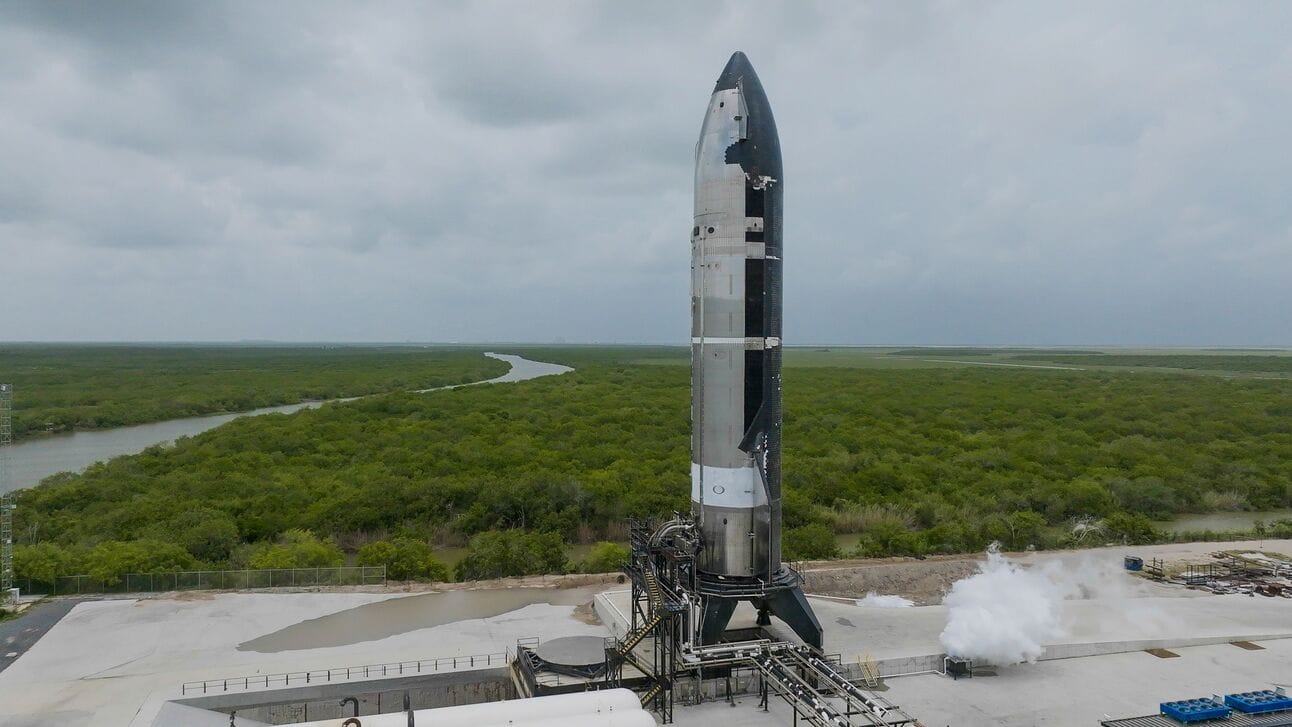
The Starship upper stage on the test stand at the Massey's site at SpaceX's Starbase facility in South Texas. (Credit: SpaceX)
26 June, 2025
Mexico is preparing legal action against SpaceX following a June 18 Starship explosion at the company’s Starbase facility in Texas, which allegedly scattered debris across the border into Tamaulipas. President Claudia Sheinbaum announced that her administration is reviewing potential violations of international law, citing environmental contamination and threats to marine ecosystems. Conservation groups reported debris—including plastics, metals, and fuel tanks—along beaches during sea turtle nesting season, raising concerns about harm to endangered species. SpaceX had claimed in a social media post that the explosion did not pose risks to nearby communities.
The incident marks the fourth Starship failure this year and adds to a growing list of environmental complaints tied to SpaceX’s operations near the U.S.-Mexico border. While the U.S. Federal Aviation Administration recently approved an increase in Starship launches from five to 25 annually, critics argue that environmental risks have been downplayed. Mexico’s response emphasizes the broader tensions over cross-border impacts of commercial space activity, with officials emphasizing the need for accountability when private aerospace ventures affect neighboring nations’ ecosystems and sovereignty
Low Earth Orbit Faces Sustainability Challenges as Cheap, Uninsured Satellites Contribute to Orbital Debris

An animation showing a satellite in Earth’s orbit being destroyed by a speeding debris. (Credit: ESA)
27 June, 2025
A growing number of satellites are breaking up in orbit, contributing to Earth’s expanding debris problem—and many are uninsured. The 2024 explosion of the $500 million Intelsat-33e satellite, which fragmented into at least 20 pieces, exemplifies the trend. As launch costs fall and satellite constellations grow, operators are increasingly opting out of insurance to cut costs, especially for smaller, short-lived spacecraft. This has created a feedback loop: cheaper, uninsured satellites are more likely to fail and fragment, worsening orbital congestion.
Meanwhile, the cost of satellite insurance has surged, with 2023 marking one of the worst years on record for insurers, who faced over $500 million in claims. The imbalance between falling launch prices and rising insurance premiums has left only a fraction of the 12,000+ active satellites covered. Experts warn that without regulatory or market intervention, the sustainability of low Earth orbit could be at risk as debris density continues to climb.
When satellites are uninsured, operators bear the full financial loss if something goes wrong. To minimize exposure, many cut costs by building cheaper, less robust spacecraft and launching them more frequently. These lower-cost satellites are often less resilient to harsh orbital conditions or collisions, making them more prone to failure and fragmentation. This creates a feedback loop: more uninsured, fragile satellites in orbit raise the likelihood of breakups, which in turn adds to the growing cloud of space debris.

MILITARY
York Space Accelerates Military Satellite Launch for US Space Development Agency
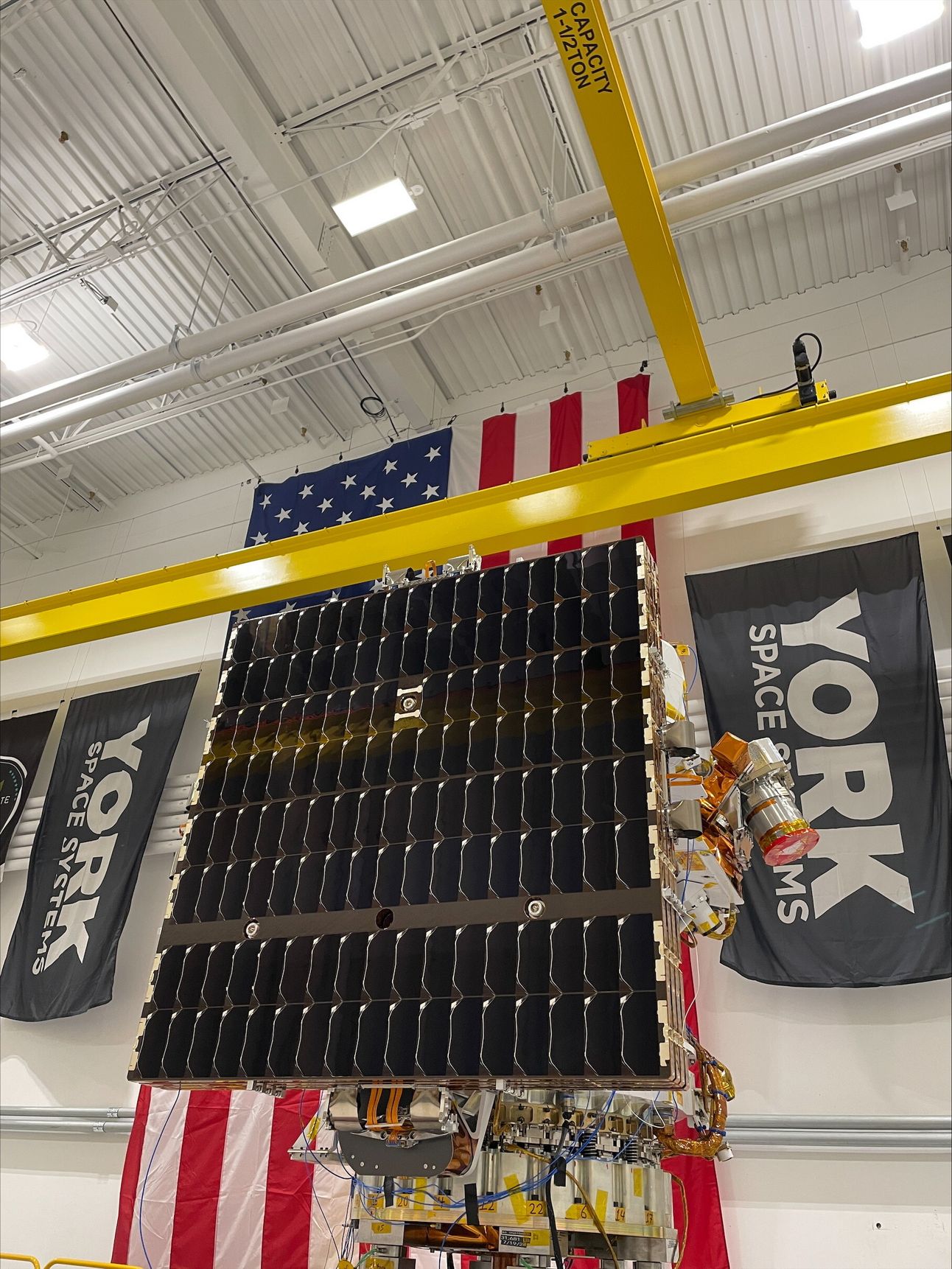
York’s spacecraft undergoing vibration environmental testing at York Facility. (Credit: York Space Systems)
23 June, 2025
York Space Systems has launched its first satellite under the U.S. Space Development Agency’s (SDA) Tranche 1 Demonstration and Experimentation System (T1DES) program. The satellite, named Dragoon, lifted off June 23 aboard SpaceX’s Transporter-14 rideshare mission from Vandenberg Space Force Base. Built on York’s LX-class bus, Dragoon is designed to test secure connectivity for targeting, missile warning, and tracking advanced threats from low Earth orbit. The mission was accelerated ahead of schedule in response to SDA’s evolving needs, with York reallocating a spacecraft from its production line and completing integration within months.
The launch marks a key milestone in SDA’s broader Proliferated Warfighter Space Architecture (PWSA), which aims to deploy hundreds of small satellites to enhance resilience and reduce latency in military communications. The initiative reflects a strategic shift away from large, vulnerable geostationary platforms toward distributed, responsive constellations capable of supporting joint warfighter operations in contested environments.
Trump Administration’s Proposed Reconciliation Bill Would Boost US Space Force Budget to Nearly $40B
26 June, 2025
The U.S. Space Force could receive nearly $40 billion in fiscal year 2026 under a proposed reconciliation bill a.k.a. the “One Big, Beautiful Bill”, backed by the Trump administration. The funding structure—described as “one budget, two bills”—combines $26.1 billion in traditional discretionary funding with an additional $13.8 billion through reconciliation, marking the largest single-year increase for the service since its inception. The bill is part of a broader $1 trillion defense strategy that includes $25 billion for the Golden Dome missile defense initiative.
The reconciliation measure would provide the Defense Department with an additional $113.3 billion, bringing the Pentagon’s total projected budget to $961.6 billion when combined with $848.3 billion in discretionary funding. In addition to defense funding, the measure allocates substantial resources to border security and other key priorities of the Trump administration, while reducing funding for social safety net programs.
While the administration touts the approach as a means to streamline defense priorities, critics note the lack of transparency and the absence of a contingency plan if the reconciliation measure fails. The proposal also introduces mandatory spending for the Department of Defense, a departure from standard appropriations. The outcome of the bill, which bypasses the Senate filibuster, could significantly shape the Space Force’s trajectory—but its long-term sustainability remains uncertain.
Pentagon Weighs Starshield Network for PWSA Transport Layer While Awarding SpaceX $81.6 Million Launch Deal
26 June, 2025
The U.S. Space Force is reassessing its satellite procurement strategy as it weighs a shift from the Space Development Agency’s (SDA) competitive Transport Layer program to a more centralized approach centered on SpaceX’s Starshield platform. The Pentagon has paused funding for Tranche 3 of the SDA’s Proliferated Warfighter Space Architecture (PWSA), which was expected to include up to 140 satellites, while it evaluates alternatives for low Earth orbit data transport. One option under consideration is MILNET, a classified network of 480 Starshield satellites operated by SpaceX under an existing contract. The move has raised concerns in Congress over reduced competition, proprietary architectures, and potential overreliance on a single vendor.
In the context of the Proliferated Warfighter Space Architecture (PWSA), the transport layer is a low Earth orbit communications network designed to quickly route military data—including targeting, missile warning, and secure connectivity—through a resilient constellation of small satellites.
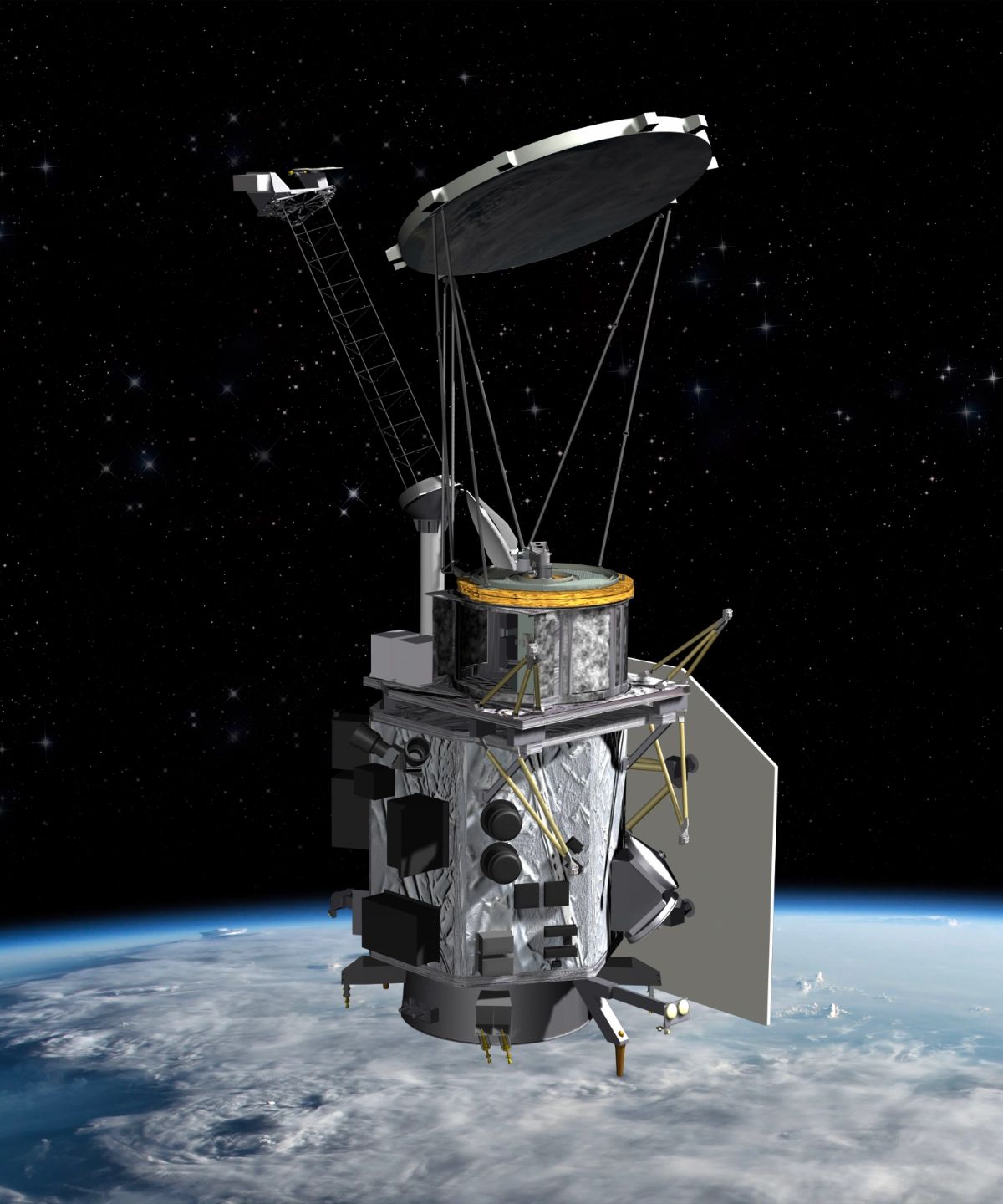
A rendering of the Weather System Follow-on–Microwave satellite. (Credit: BAE Systems)
Despite the uncertainty surrounding future SDA procurements, SpaceX continues to expand its military launch portfolio. On June 27, the company secured an $81.6 million contract to launch the Weather System Follow-on – Microwave Space Vehicle 2 (WSF-M2) in 2027. The satellite, built by BAE Systems, will provide critical data on tropical cyclones, space weather, and environmental conditions from a sun-synchronous orbit. The mission, designated USSF-178, also includes a secondary payload of experimental small satellites and marks SpaceX’s third consecutive win under the National Security Space Launch (NSSL) Phase 3 Lane 1 program.
Once again, these developments highlight the growing influence of commercial providers in U.S. defense space operations, while also exposing tensions between agility, cost-efficiency, and the long-term risks of vendor consolidation in national security architectures.

COMMERCIAL
ULA Pilots Government-Compliant AI Chatbot Developed with OpenAI, PwC
22 June, 2025
U.S.-based defense contractor, United Launch Alliance (ULA) is piloting “RocketGPT,” a government-compliant AI chatbot developed with OpenAI and PwC, to support internal workflows involving sensitive aerospace data. Deployed to around 150 employees, the tool runs on Microsoft’s Azure secure cloud platform, which meets U.S. government standards for handling International Traffic in Arms Regulations (ITAR)-restricted information.
The chatbot is designed to assist with tasks such as drafting reports, analyzing flight telemetry, and preparing government proposals—areas where AI’s ability to process large volumes of data can reduce manual workload. ULA emphasizes that RocketGPT functions as a research assistant rather than a replacement for human staff, addressing concerns about automation and accountability. The initiative reflects a broader push to integrate AI into the defense industrial base under strict compliance frameworks. It also marks a strategic win for OpenAI, which recently secured a $200 million Pentagon contract to develop frontier AI tools for national security applications.
Atlas V Launches Second Batch of Project Kuiper Satellites for Amazon
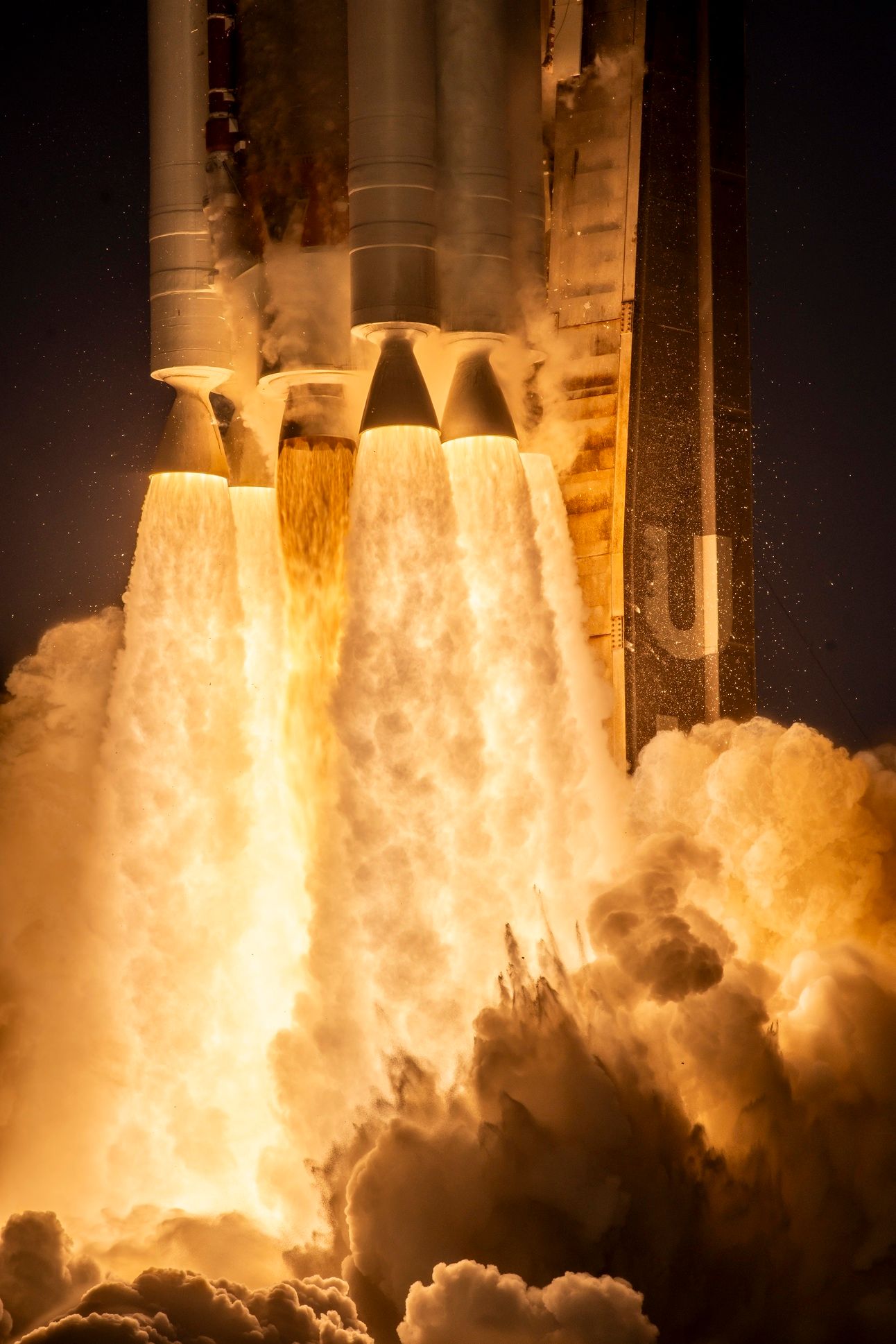
A ULA Atlas V rocket lifts off from Space Launch Complex-41 on June 23 for Amazon's Project Kuiper broadband satellite constellation. (Credit: United Launch Alliance)
23 June, 2025
Amazon has launched its second batch of Project Kuiper satellites, deploying 27 spacecraft aboard a United Launch Alliance Atlas V rocket from Cape Canaveral (U.S.) on June 23. This brings the constellation’s total to 54 operational satellites, still far from the planned 3,236 needed to meet regulatory milestones by mid-2026. The launch, delayed from June 16 due to an engine issue, is part of Amazon’s broader strategy to establish a global broadband network in low Earth orbit. The first full-scale deployment of Project Kuiper took place in April 2025.
The company has secured over 80 launches across multiple providers—including ULA, SpaceX, Blue Origin, and Arianespace—marking the largest commercial launch procurement to date. Project Kuiper enters a competitive landscape dominated by SpaceX’s Starlink, which already operates more than 7,600 satellites. Amazon emphasizes sustainability and reduced optical interference, but questions remain about its ability to scale quickly enough. The next Kuiper missions will transition to ULA’s Vulcan Centaur, which offers higher payload capacity per launch.
Ukraine & Allies Seek €100M for Dual-Use Surveillance Satellite System to Reduce US Reliance
23 June, 2025
A consortium led by Ukraine and involving Nordic and Eastern European partners is seeking over €100 million / $115 million to develop a constellation of more than 70 Earth observation satellites. The initiative, dubbed Intermarsat, and led by an industry group known as Ukrainian Aerospace Clusters’ Alliance, aims to reduce regional dependence on U.S. intelligence by providing independent, dual-use imaging capabilities along Russia’s border. The planned satellites will operate in sun-synchronous orbit at around 500 kilometers or 310 miles, equipped with optical sensors and synthetic aperture radar (SAR) for all-weather, day-night coverage and a resolution of about 50 centimeters.
The effort follows a temporary pause in U.S. intelligence sharing with Ukraine earlier this year, which exposed vulnerabilities in regional situational awareness. A feasibility study concluded that participating countries—including Finland, Poland, Czechia, and the Baltic states—possess the technical capacity to deliver the system within five years. The project reflects a broader push for strategic autonomy in space-based surveillance, with private investment expected to drive early development phases.
Lynk Global Pursues Independent Path as Slam Corp Merger Stalls Amid Lawsuit
24 June, 2025
Lynk Global’s planned merger with Slam Corp, a SPAC founded by Alex Rodriguez, is unraveling amid legal disputes and financial strain. Slam has filed a lawsuit to prevent Lynk from terminating the deal, alleging breach of contract and failure to act in good faith. Lynk counters that the claims are baseless and intends to file counterclaims, asserting the agreement expires June 30 despite Slam’s investor-approved extension to December.
The merger, announced in early 2024, has faced repeated delays and dwindling capital—Slam’s trust account has dropped from $575 million to $23.7 million. Meanwhile, Lynk continues to pursue its direct-to-smartphone satellite ambitions independently, having deployed five satellites and raised $85 million toward a $215 million Series B round. The dispute underscores broader volatility in the SPAC market and intensifying competition in the direct-to-device sector, where rivals like AST SpaceMobile and SpaceX are accelerating deployments and expanding service capabilities.
The Exploration Company’s Mission Possible Ends with Loss of Celestis Payloads
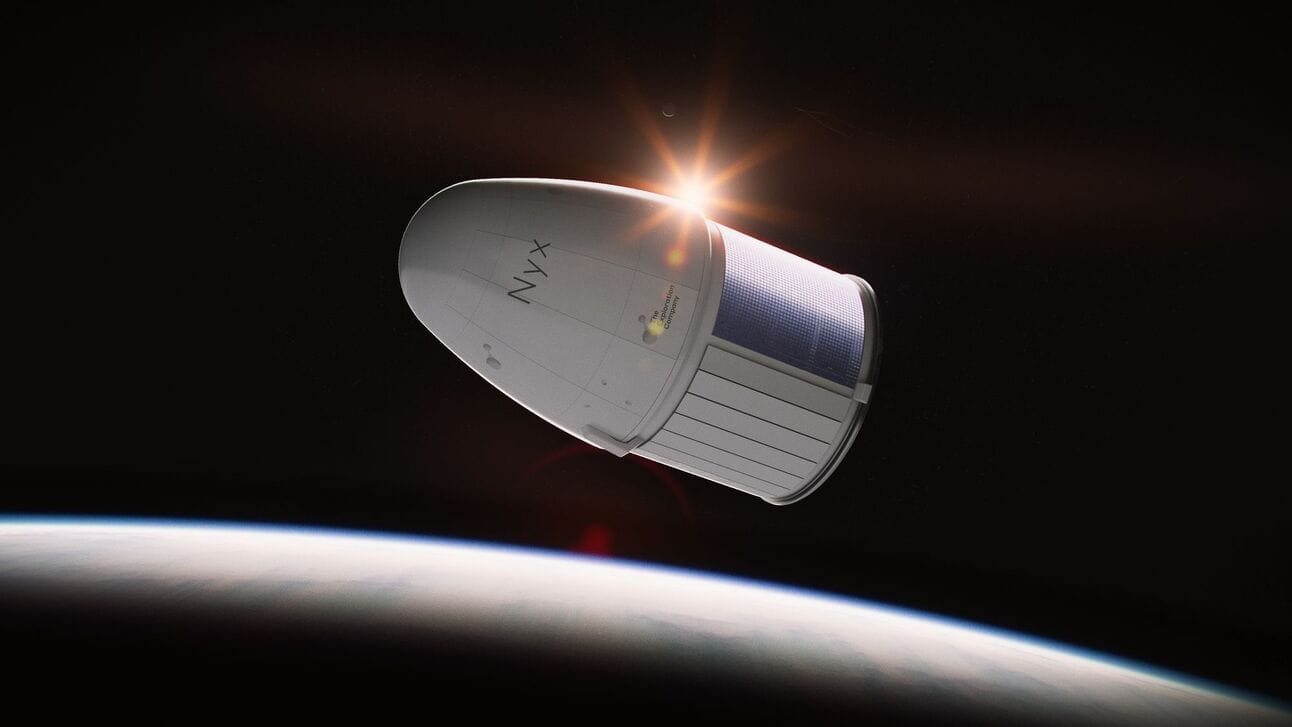
A render of the Exploration Company’s Nyx cargo vehicle in orbit. (Credit: The Exploration Company)
24 June, 2025
The Exploration Company’s “Mission Possible” capsule, launched June 23 aboard SpaceX’s Transporter-14 mission, achieved several key milestones before contact was lost during splashdown. The 2.5-meter demonstrator successfully reached orbit, powered its payloads, and reentered Earth’s atmosphere, reestablishing communication after the expected blackout. However, the vehicle failed to complete recovery, likely due to a parachute malfunction. Among the 300 kg of cargo were over 150 memorial capsules containing human remains and DNA in partnership with Celestis, now presumed lost in the Pacific. Celestis is a private company that offers memorial spaceflights, launching symbolic portions of cremated remains or DNA into space as a tribute to loved ones.
The company characterized the flight as a partial success, citing validation of orbital operations and thermal protection systems. Originally intended to validate reentry and recovery systems, as the final subscale test before transitioning to the full-scale Nyx spacecraft, planned for 2028, the outcome may prompt an additional demonstration.
Laser Rangefinder Malfunction Led to ispace’s Resilience Lunar Lander Crash
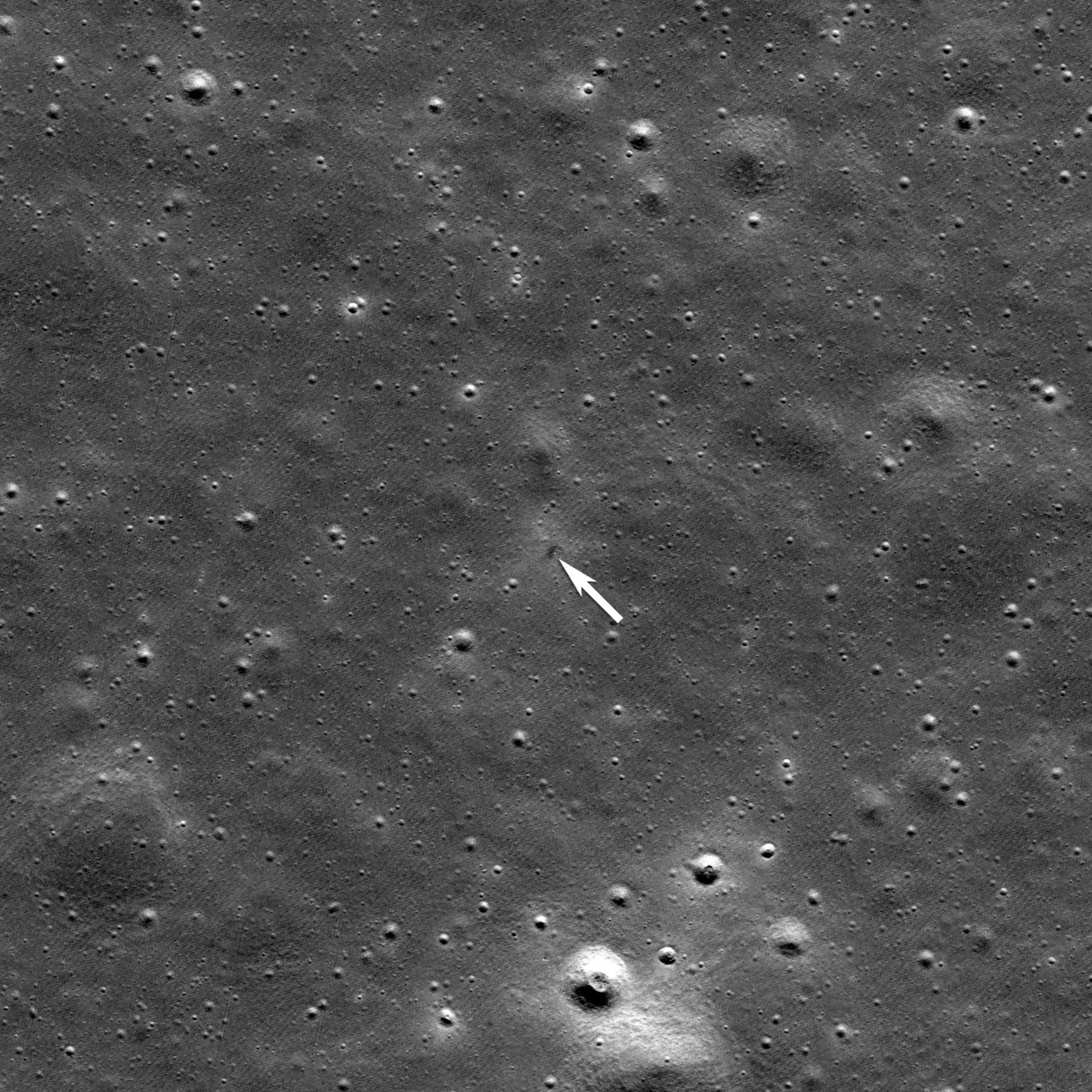
The RESILIENCE site post-impact. North is oriented at the top of the image, which spans approximately 2 miles from west (left) to east (right). (Credit: NASA/Goddard/Arizona State University)
24 June, 2025
Japanese company ispace has confirmed that its second lunar lander, Resilience, crashed on June 5 due to a malfunction in its laser rangefinder (LRF). The device, intended to trigger the final landing burn at an altitude of 3 kilometers, failed to provide data until the lander was below 900 meters, leaving insufficient time to decelerate. The spacecraft impacted the lunar surface at 42 meters per second, creating a 16-meter-wide crater, about 282 meters south and 236 meters east of the planned landing location
This marks ispace’s second failed landing attempt, following a software error in 2023. The company attributes the latest failure to degraded sensor performance, possibly caused by surface reflectivity, laser power, or environmental factors. In response, ispace plans to enhance sensor testing, consider alternative hardware, and integrate additional navigation systems. Despite the setback, the company is proceeding with Missions 3 and 4, scheduled for 2027, and has committed to external technical reviews and closer collaboration with JAXA.
Rocket Lab to Launch ESA Pathfinder Satellites for LEO Navigation Demo as Electron Sets New Cadence Benchmark
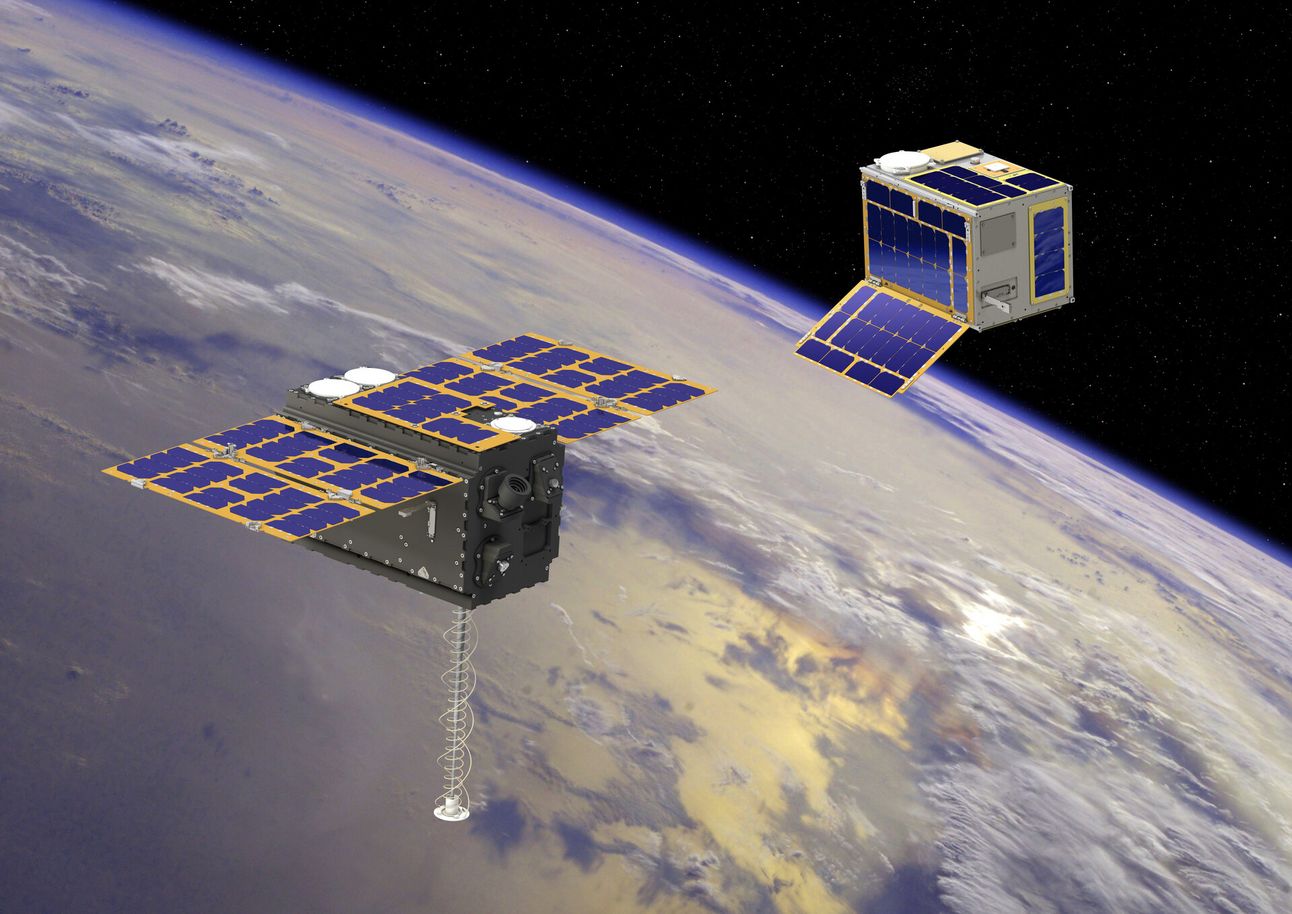
A rendering of ESA’s Pathfinder A satellites set to launch on an Electron. (Credit: ESA)
25 June, 2025
Rocket Lab has been selected to launch the European Space Agency’s (ESA) first two Pathfinder A satellites for its Low Earth Orbit Positioning, Navigation, and Timing (LEO-PNT) demonstrator mission. Scheduled for no earlier than December 2025, the mission will lift off from Rocket Lab’s Launch Complex 1 in New Zealand aboard an Electron rocket. The satellites, developed by Thales Alenia Space and GMV, will be deployed into a 510-kilometer orbit to test how low Earth orbit assets can augment Europe’s existing Galileo and EGNOS systems, which operate in medium and geostationary orbits.
The LEO-PNT initiative aims to enhance the resilience and accuracy of satellite navigation services, particularly in environments where traditional GNSS signals are weak or obstructed. The mission is also time-sensitive: ESA must activate its allocated spectrum before a spring 2026 deadline to retain regulatory rights. The Pathfinder A satellites are expected to operate for at least six months, providing critical data to inform the design of a future 10-satellite test network and, potentially, a full-scale constellation.
ESA’s decision to contract Rocket Lab reflects ongoing challenges in Europe’s smallsat launch capacity, as domestic options remain limited. Rocket Lab’s track record with European clients—including Kinéis and OroraTech—likely influenced the selection.
Meanwhile, Rocket Lab has intensified its launch cadence, completing two Electron missions from the same New Zealand pad within 48 hours—a first for the company. The June 26 “Get The Hawk Outta Here” mission deployed four satellites for HawkEye 360, including three radio frequency (RF) geolocation satellites and one experimental payload, Kestrel-0A. Just two days later, the “Symphony In The Stars” mission launched a single satellite for a confidential commercial customer, marking Rocket Lab’s 68th Electron flight and its tenth of 2025. These back-to-back launches underscore the company’s growing responsiveness and operational maturity as it balances commercial and institutional contracts.
Isar Aerospace Expands Launch Capabilities as Lux Aeterna Unveils Reusable Satellite Platform

Isar Aerospace’s Spectrum launch vehicle lifts off during the first test flight from the Andøya Spaceport in Norway, on March 30, 2025. (Credit: Isar Aerospace)
25 June, 2025
Germany’s Isar Aerospace has secured €150 million / $174 million in convertible debt from U.S.-based Eldridge Industries to expand its Spectrum launch vehicle program and production facilities near Munich. The funding follows the company’s inaugural launch attempt in March, which failed to reach orbit but yielded valuable flight data. Isar, already backed by over €600 million in private and public funds, is positioning itself as a key player in Europe’s push for sovereign launch capabilities, with contracts extending into the next decade and participation in ESA’s Launcher Challenge.
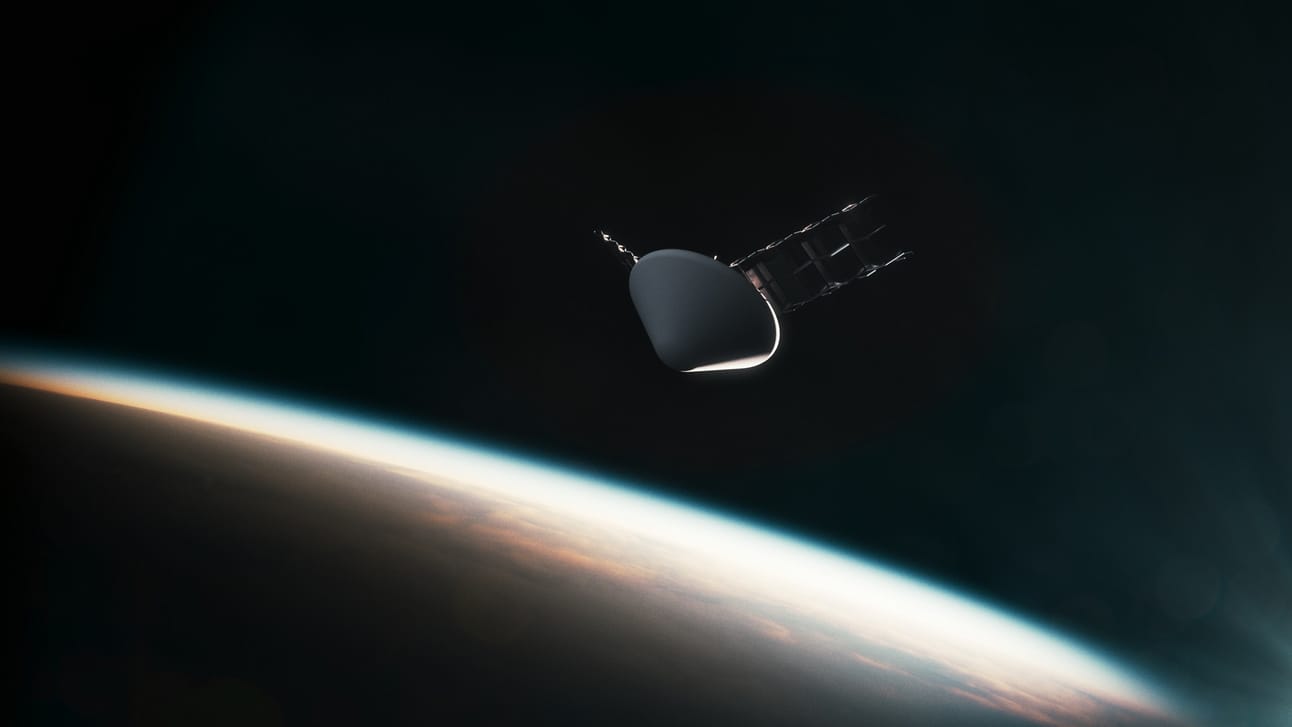
A rendering of Delphi, Lux Aeterna’s reusable satellite demonstrator scheduled to launch in 2027. (Credit: Lux Aeterna)
25 June, 2025
Meanwhile, Denver-based Lux Aeterna has emerged from stealth with $4 million in pre-seed funding to develop Delphi, a fully reusable satellite bus designed to return from orbit for refurbishment and redeployment. The company, founded by veterans of SpaceX and Project Kuiper, aims to demonstrate its platform in 2027 aboard a SpaceX Falcon 9 rideshare. Lux Aeterna’s model targets both defense and commercial markets, offering a modular, lease-based approach to satellite operations.
Maxar Launches Persistent Global Monitoring Platform Powered by Satellite Data and AI

High-resolution satellite imagery of China's PLAN Aircraft carrier Shandong. (Credit: Maxar Intelligence)
25 June, 2025
Maxar Intelligence has launched Sentry, a persistent monitoring suite designed to deliver predictive intelligence at global scale. The system integrates AI-driven analytics, multi-constellation tasking, and real-time data fusion to monitor hundreds of sites worldwide. Drawing on Maxar’s 250-petabyte archive of high-resolution imagery, collected over more than two decades, Sentry uses machine learning to detect patterns and anomalies across land and maritime domains.
The suite includes two mission-specific products: Site Sentry, for monitoring strategic locations such as shipyards and airports, and Maritime Sentry, for tracking vessel activity across vast ocean areas. Unlike traditional satellite imaging, which offers periodic snapshots, Sentry aims to orchestrate continuous coverage by coordinating multiple satellite constellations—including third-party assets.
Maxar positions the platform as a shift from static mapping to dynamic situational awareness, with applications ranging from infrastructure protection to early threat detection. The launch reflects a broader industry trend toward fusing commercial and sovereign data sources to enable real-time, AI-enhanced geospatial intelligence for both government and commercial users.
Technology Safeguards Agreement Clears Path for Firefly’s Orbital Launches from Sweden’s Esrange Space Center
26 June, 2025
A newly signed Technology Safeguards Agreement (TSA) between the United States and Sweden has cleared the way for Firefly Aerospace to conduct orbital launches from Esrange Space Center in northern Sweden. The agreement, finalized on June 20, establishes a legal and technical framework for U.S. commercial space activities from Swedish territory while ensuring the protection of sensitive American technology. It marks only the sixth such TSA signed by the U.S. and is seen as a strategic step toward expanding launch capabilities in mainland Europe.
Firefly, in partnership with the Swedish Space Corporation (SSC), plans to launch its Alpha rocket from Esrange’s Launch Complex 3C, where infrastructure is already in place. The move is expected to bolster Europe’s access to responsive launch services and strengthen transatlantic cooperation in the space sector. Both SSC and Firefly emphasize the agreement’s role in meeting growing demand from NATO partners and commercial satellite operators.

RESEARCH SPOTLIGHT
Lunar Dust Found Less Toxic Than Urban Air Pollution in New Study

Microscopy image of lunar dust simulant samples. (Credit: Michaela B. Smith)
New research from the University of Technology Sydney suggests that lunar dust may pose less of a health risk than previously feared. The study, published in Life Sciences in Space Research, compared the effects of lunar dust simulants on human lung cells to those of urban air pollution collected from a busy Sydney street. While the sharp, abrasive lunar particles caused some physical irritation, they did not trigger the same level of cellular damage or inflammation observed with Earth-based pollutants.
The findings challenge long-standing concerns stemming from Apollo-era reports of “lunar hay fever” among astronauts, who experienced respiratory symptoms after inhaling dust brought into the cabin on their suits. Researchers emphasized that lunar dust acts more as a mechanical irritant than a chemically toxic substance. The results offer cautious reassurance for upcoming Artemis and Chinese lunar missions, though scientists continue to stress the importance of dust mitigation strategies to protect astronaut health during extended lunar surface operations.
New Study Proposes Universe Originated Inside a Black Hole in a Parent Universe
A new study challenges the conventional Big Bang model by proposing that our universe may have originated inside a black hole within a larger “parent” universe. Led by researchers at the University of Portsmouth (U.K.), the model—dubbed the “Black Hole Universe”—suggests that instead of beginning with a singularity, the cosmos emerged from a gravitational collapse followed by a bounce, all within the framework of general relativity and quantum mechanics. This approach avoids invoking speculative forces like dark energy or inflation, which are central to the standard cosmological model but remain poorly understood.
The team’s simulations indicate that under certain conditions, a collapsing mass can rebound rather than form a singularity, producing an expanding universe similar to our own. While theoretical, the study offers a potential resolution to long-standing tensions between general relativity and quantum physics, and reframes the origin of the universe as a continuation of cosmic processes rather than a singular beginning. The study about this theory has been published in the journal Physical Review D.
Desert Lichen Study Suggests Photosynthetic Life May Survive Harsh Exoplanet Radiation

Clavascidium lacinulatum, or brown stipplescale lichen, is a common sight in the Mojave Desert. (Credit: Bob O’Kennan via iNaturalist)
A new study from the Desert Research Institute and University of Nevada, Reno suggests that life may be more resilient to extreme radiation than previously thought. Researchers exposed Clavascidium lacinulatum, a common black lichen from the Mojave Desert, to continuous UVC radiation—levels typically lethal to life—for three months. Despite cellular damage, half of the algal cells survived and replicated after rehydration. The lichen’s dark outer pigment, described as a natural “sunscreen,” appears to shield its photosynthetic cells from DNA damage.
The findings, published in Astrobiology, challenge assumptions about habitability on exoplanets orbiting M and F-type stars, which emit intense UVC radiation. These results suggest that photosynthetic life could potentially persist on planets previously deemed too hostile due to stellar activity. The study adds to a growing body of research exploring extremophiles as analogs for extraterrestrial life, particularly as the search for biosignatures expands beyond Mars to more distant, radiation-rich planetary systems.
Despatch Out. 👽🛸
Reply